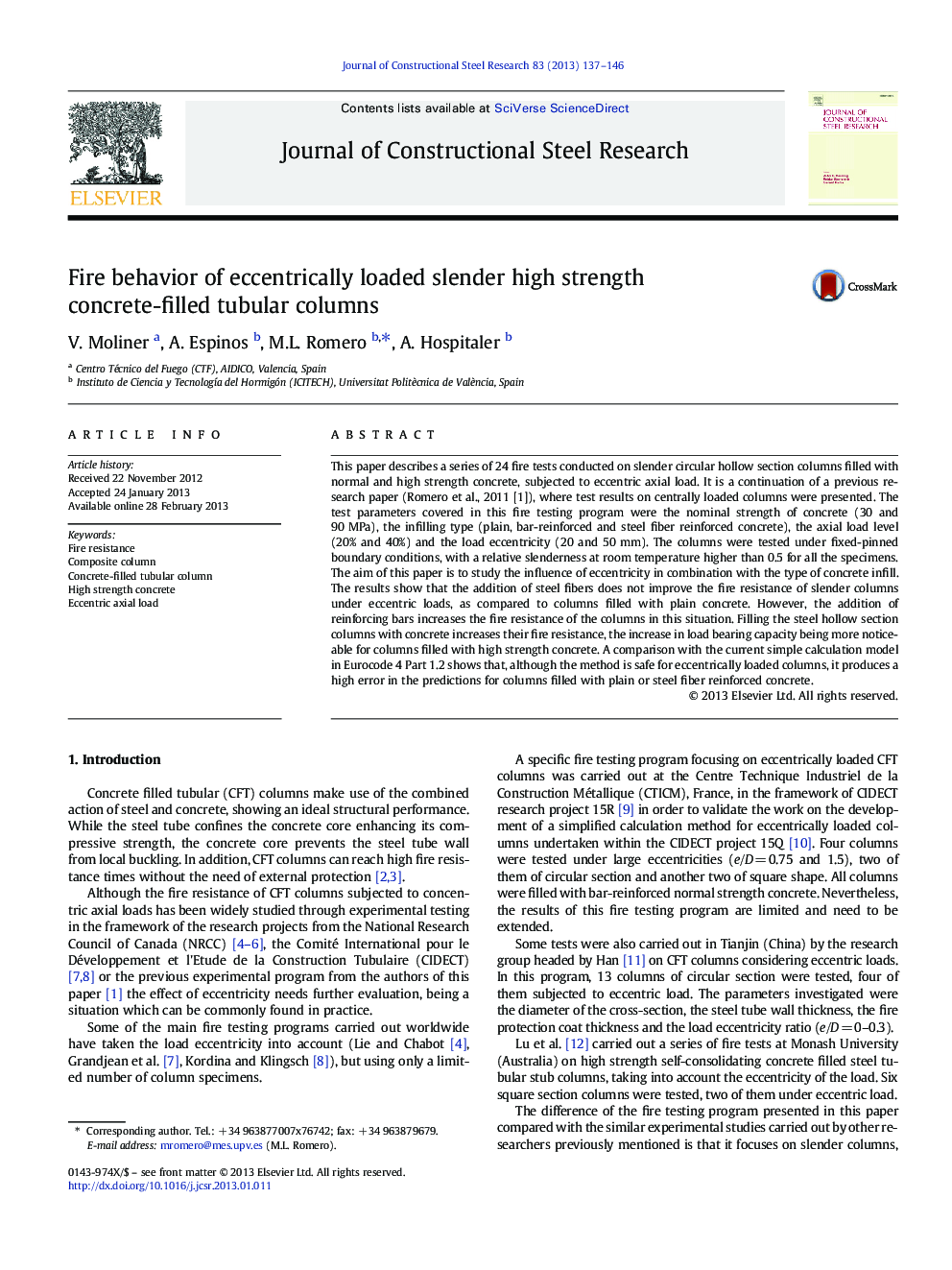| Article ID | Journal | Published Year | Pages | File Type |
|---|---|---|---|---|
| 285052 | Journal of Constructional Steel Research | 2013 | 10 Pages |
This paper describes a series of 24 fire tests conducted on slender circular hollow section columns filled with normal and high strength concrete, subjected to eccentric axial load. It is a continuation of a previous research paper (Romero et al., 2011 [1]), where test results on centrally loaded columns were presented. The test parameters covered in this fire testing program were the nominal strength of concrete (30 and 90 MPa), the infilling type (plain, bar-reinforced and steel fiber reinforced concrete), the axial load level (20% and 40%) and the load eccentricity (20 and 50 mm). The columns were tested under fixed-pinned boundary conditions, with a relative slenderness at room temperature higher than 0.5 for all the specimens. The aim of this paper is to study the influence of eccentricity in combination with the type of concrete infill. The results show that the addition of steel fibers does not improve the fire resistance of slender columns under eccentric loads, as compared to columns filled with plain concrete. However, the addition of reinforcing bars increases the fire resistance of the columns in this situation. Filling the steel hollow section columns with concrete increases their fire resistance, the increase in load bearing capacity being more noticeable for columns filled with high strength concrete. A comparison with the current simple calculation model in Eurocode 4 Part 1.2 shows that, although the method is safe for eccentrically loaded columns, it produces a high error in the predictions for columns filled with plain or steel fiber reinforced concrete.
► 24 fire tests on eccentrically loaded circular slender CFT columns were performed. ► The influence of using high strength concrete as infill was studied. ► The use of steel fibers did not improve the fire resistance under eccentric loads. ► A significant benefit in the fire resistance was found when using reinforcing bars. ► The method in Eurocode 4 was evaluated, obtaining safe results for eccentric loads.
